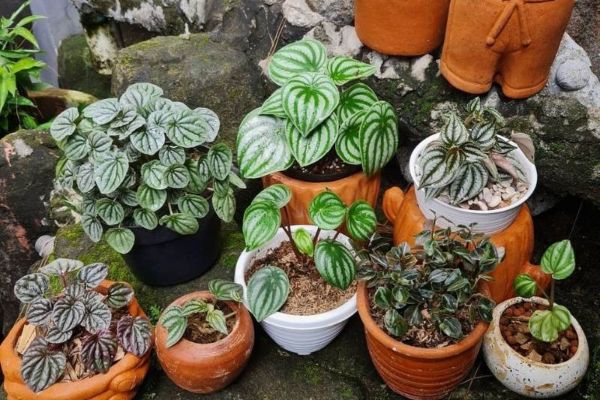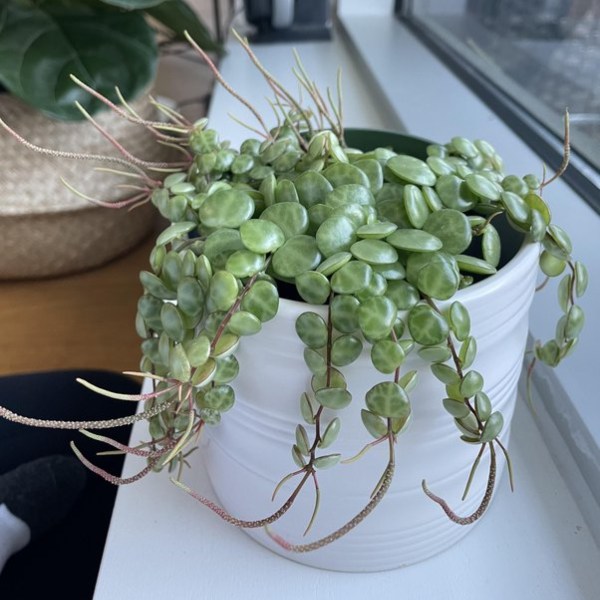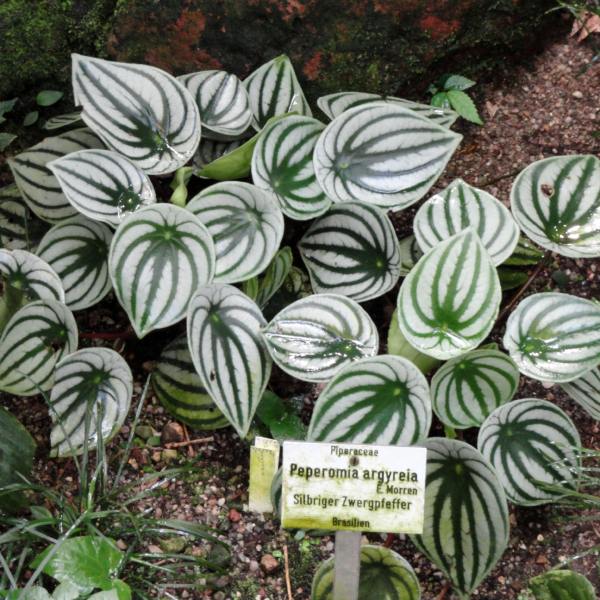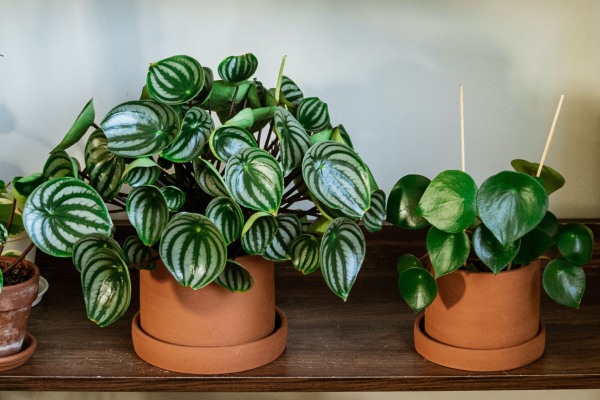Peperomia, also known as baby rubber plants, are typically low-maintenance houseplants. They belong to the Piperaceae family and are known for their ornamental foliage that comes in different shapes, sizes, and textures.
In this article, we will explore important factors of the Peperomia plant like selecting the right variety and providing optimal growing conditions, propagation methods, pest, and disease management, and tips for maintaining thriving Peperomia plants indoors.
Whether you are new to gardening or already have experience, this guide will help you grow beautiful and thriving peperomias in your home.
Introduction to Peperomia: Exploring a Versatile Houseplant
Peperomia, originating from Mexico, South America, and the Caribbean, thrives in tropical climates, often found in lush cloud forests and rainforests where it grows epiphytically on wood. This plant is characterized by thick, water-retaining leaves that vary in size and shape. However, peperomias often feature emerald green foliage adorned with intricate silver patterns.
While Peperomias may occasionally bloom, their flowers are modest and inconspicuous, with long, slender stalks in muted green or brown tones. However, the plant’s overall aesthetic appeal is its beautiful foliage, not its blooms.
Growing Peperomia Plants: Essential Care and Growth Tips

Peperomia offers a delightful addition to any indoor garden with its diverse foliage and easy-care nature. Understanding the basic factors of Peperomia care is essential for ensuring their health and vitality. From providing optimal lighting conditions to mastering watering techniques, every step contributes to the flourishing growth of these beloved houseplants.
Light
Place your Peperomia where it gets medium to bright indirect sunlight to keep its leaves colorful. The plant can handle different light conditions, but not direct sunlight because it may harm its leaves. Similarly, if the plant doesn’t get enough light, it may lose leaves or look dull. So, put them close to an east or west window or a few feet away from a north or south window.
Soil and Water
For soil, choose a well-drain potting mix with good aeration. You can also make it lighter by adding some coconut coir and perlite for better airflow. Similarly, water your plant deeply when the top inch of soil is dry, but don’t water too much as Peperomias can get root rot. Let the top two inches of soil dry before watering again. It is better to keep your Peperomia on the dry side than to make the soil soggy, which can harm the roots.
Temperature and Humidity
Peperomias prefer room temperatures averaging between 60-80°F and enjoy higher humidity levels. They thrive in warm temperatures and moderate to high humidity but cannot tolerate frost. So, avoid cold drafts and sudden temperature changes. Although they are okay with regular indoor humidity, you can increase humidity indoors by misting the leaves or putting a tray of water and pebbles under the pot.
Fertilizer
During the growing season in spring and summer, use a balanced houseplant fertilizer diluted to half strength once a month. If the soil is poor, provide a diluted liquid fertilizer monthly during this period. Remember, don’t give too much fertilizer to Peperomia plants, especially in winter. Or, just follow the instructions on the label for how much to use.
Pruning

In early spring, gently trim Peperomia plants if they are growing too long and sparse. Pinch off the stems just above a leaf node to make the plant look fuller and bushier. Peperomias can handle pruning, so don’t hesitate to trim them if they start looking too stretched out. You can use the cutting pieces during propagation to create more plants.
Potting and Repotting
Peperomia plants can thrive for many years in a small pot. They like it when their roots are a bit crowded, and since they grow slowly, you can leave them until you notice roots poking out of the drainage holes. When it’s time to repot, choose a container only slightly bigger than their current one and use acidic soil or orchid bark.
Pests and Problems
Peperomia plants, like many houseplants, can be bothered by common pests such as mealybugs, spider mites, and whiteflies. The simplest way to deal with these pests is by using insecticidal soap. Similarly, if you notice any of these pests, separate the affected plant from others and spray it with neem oil or insecticidal soap.
Propagation Techniques for Expanding Peperomias
You can make new Peperomia plants at any time, but it is best to do it in spring or summer. If you are planning to prune your plants in spring, you can easily create new plants from stem cuttings. Cut a stem from the plant, take off the bottom leaves, leaving one or two mature leaves at the top, and make sure there is at least one node on the stem. Then, put these cuttings in moist soil or water, and they will grow roots in a few weeks. Also, keep the new cuttings warm and humid until they start to root.
Choosing the Right Peperomia Variety for Your Home
The Peperomia genus includes over 1,500 species, many of which are great for indoor gardening. These plants can look quite different from each other. Peperomia leaves come in various textures and colors like red, green, gray, or purple. They also have different patterns, from solid colors to variegated or marbled designs. Leaf shapes range from large to tiny and can be heart-shaped, round, or pointed.

With so much diversity, there is likely at least one that would thrive in your home. Peperomias are low-maintenance, slow-growing, and can be planted at any time of the year. Here are some popular varieties included.
Peperomia caperata
Peperomias caperata, commonly known as Ripple peperomia, is one of the more popular species of peperomia. This plant is characterized by its deeply ridged, heart-shaped leaves that range from dark green to burgundy. Generally, this peperomia is considered an easy and low-maintenance houseplant as it doesn’t require a lot of sunlight and does well with moderate water. It is also safe for pets, making it a great choice for beginners and seasoned plant enthusiasts.
Peperomia Rosso
Peperomia rosso, or Peperomia caperata ‘Rosso’, is recognized for its textured, vibrant leaves. Its foliage is fleshy, almost like succulents, with silver color and green veins on the upper side and deep red underneath. It typically grows up to 8 inches wide and tall. As a houseplant, Peperomia rosso is easy to care for, requiring moist but well-drained soil, moderate watering, and indirect bright light.
Peperomia argyreia
Peperomia argyreia, commonly known as Watermelon Peperomia or Watermelon Begonia, is named after its striking silver and green striped round leaves resembling a watermelon. This plant has become a favorite among indoor gardeners for its eye-catching foliage. It grows only 6 to 8 inches tall. It is often mistaken for a begonia, despite not being related.
Peperomia raindrops
Peperomia raindrops, scientifically named Peperomia Polybotrya, is a low-maintenance houseplant known for its chubby, glossy leaves resembling like a water droplet. Besides, these leaves are designed to store water due to their thickness. It thrives with adequate light and water, moderate temperatures, and high humidity. It reaches only 12-15 inches tall, making it an ideal choice for indoor cultivation. Additionally, its lush foliage acts as a shield against indoor pollutants like formaldehyde. With each leaf, it purifies the air, promoting a cleaner and more invigorating indoor atmosphere.
Cupid peperomia
Cupid peperomia, also known as Peperomia scandens ‘Variegata,’ is a charming varietal perfect for hanging baskets. Its heart-shaped leaves adorned with cream edges make it a stunning addition to any space. Peperomia Cupid grows fast and thrives on its own. It prefers bright, indirect light, and since these plants store water, so you don’t need to water them frequently. Cupid Peperomias are entirely safe for humans and pets, making them a worry-free choice for any location
Frequently Asked Questions
1. Is Peperomia a good indoor plant?
Yes, Peperomia is generally considered a good indoor plant. It is popular for its attractive foliage, which comes in various colors, textures, and patterns, making it visually appealing.
2. Is Peperomia an air purifier?
Peperomia plants are not typically considered air purifiers like some other plants such as spider plants or peace lilies. However, Peperomia raindrops are likely to purify the air with their lush foliage as they oppose indoor pollutants like formaldehyde.
3. Is Peperomia good for bedrooms?
Yes, Peperomia can be a good choice for bedrooms. These plants are typically low-maintenance plants that can tolerate a variety of indoor conditions, including lower light levels commonly found in bedrooms.
Also read, All You Need To Know About Polka Dot Plants – Growth, Care, Tips, and More
